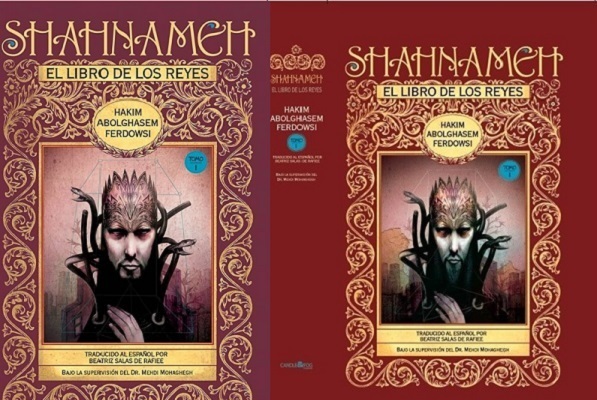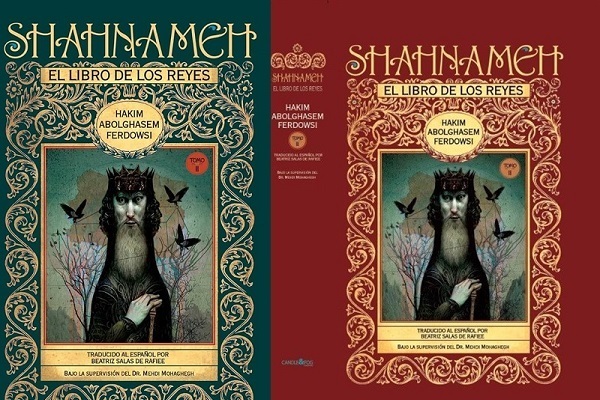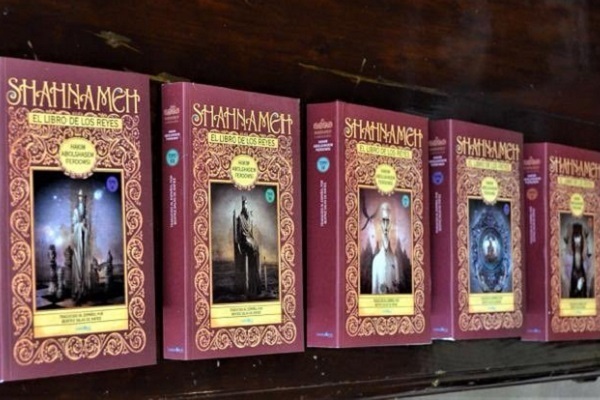‘Fresh and Novel’: Publisher Stresses Shahnameh's Contemporary Resonance

“While it is true that a thousand years have passed since the Shahnameh was written, we firmly believe that all the concepts mentioned in this work are fresh and novel and they hold many attractions for the contemporary audience,” Afshin Shahnetabar, director of London-based publisher Candle and Fog, told IQNA.
The remarks come as Iran marks the 25th of the Persian calendar month of Ordibehesht, falling on May 14, as Ferdowsi and Persian Language Commemoration Day.
About Ferdowsi
Ferdowsi stands tall in Persian literature. Born in the year 940 CE in Tus, located in what is now eastern Iran, Ferdowsi is lauded as a colossus among Persian poets.
His seminal work, the Shahnameh, or Book of Kings, is an epic narrative that weaves together over 50,000 verses of Iran's mythical and historical sagas, spanning from the dawn of its civilization to the Islamic conquest.
Persian literature scholars believe that Ferdowsi’s epic masterpiece Shahnameh (The Book of Kings) can be considered a preserving force that keeps the culture and customs of the Iranian people alive.
See More:
In a verse from the book, Ferdowsi wrote, “I toiled much over thirty years; by the Persian language, I remade Iran.”
The verses refer to the fact that Ferdowsi spent 30 years writing the Shahnameh over a millennium ago.
The Spanish translation of Shahnameh
“As an Iranian, I felt it was my duty, driven by my love and admiration for this land, its classical literature, and a great poet like Ferdowsi, to offer a translation of his masterpiece, the Shahnameh,” Shahnetabar told IQNA.
He noted that throughout his three-decade career in publishing, one of his “most significant” goals was to translate and introduce the Shahnameh to the world in Spanish, in its entirety, for the first time. And he managed to accomplish this feat in 2022.

Beatriz de Salas, a Spanish professor at the Tehran Islamic Azad University, translated the book into Spanish. The translation took nine years to complete.
Pointing to the widespread use of the Spanish language, both geographically and demographically, Shahnetabar said the void of the Shahnameh could be felt.
Two-time Hans Christian Andersen Award nominee Pejman Rahimizadeh has designed the cover of the book. “We have modernized the illustrations in the work to foster a connection with the new generation,” the publisher said.
“If you look at the images inside the book or even just the cover, you will grasp the contemporary design of this work. You’ll find that these images are distinct from those in versions of Ferdowsi’s Shahnameh published in Iran or elsewhere.”
The Shahnameh has been translated into Russian, German, and English in the 17th and 18th centuries, and into French in the 19th century, he added.

How Hollywood draw inspiration from Shahnameh
In tandem with the main project, a secondary endeavor was undertaken with the assistance and collaboration of some friends, Shahnetabar said, adding that the project involved gathering examples from popular series or movies such as “Harry Potter,” “Iron Man,” and “Lord of the Rings,” in which producers have drawn inspiration from the Shahnameh.
“The objective was to demonstrate to audiences that what they see in the cinema in such works has roots in Ferdowsi’s Shahnameh,” he said.

This was achieved through the preparation of this research work and the documentation of elements in Hollywood that have been derived from the Shahnameh. For instance, the “crystal ball” or the myths that appear in various forms in these works can be traced back to the Shahnameh, which originated over a thousand years ago in Iran, Shahnetabar added. “I can confidently say that many people living in Europe or America are unaware of this fact.”
“I firmly believe that the Shahnameh, one of the most significant works in Iranian classical literature, holds a unique appeal that can captivate a global audience with diverse tastes,” he stressed.
Interview by Amin Khorrami (in Persian)
Translated by Mohammad Ali Haqshenas
4215640



